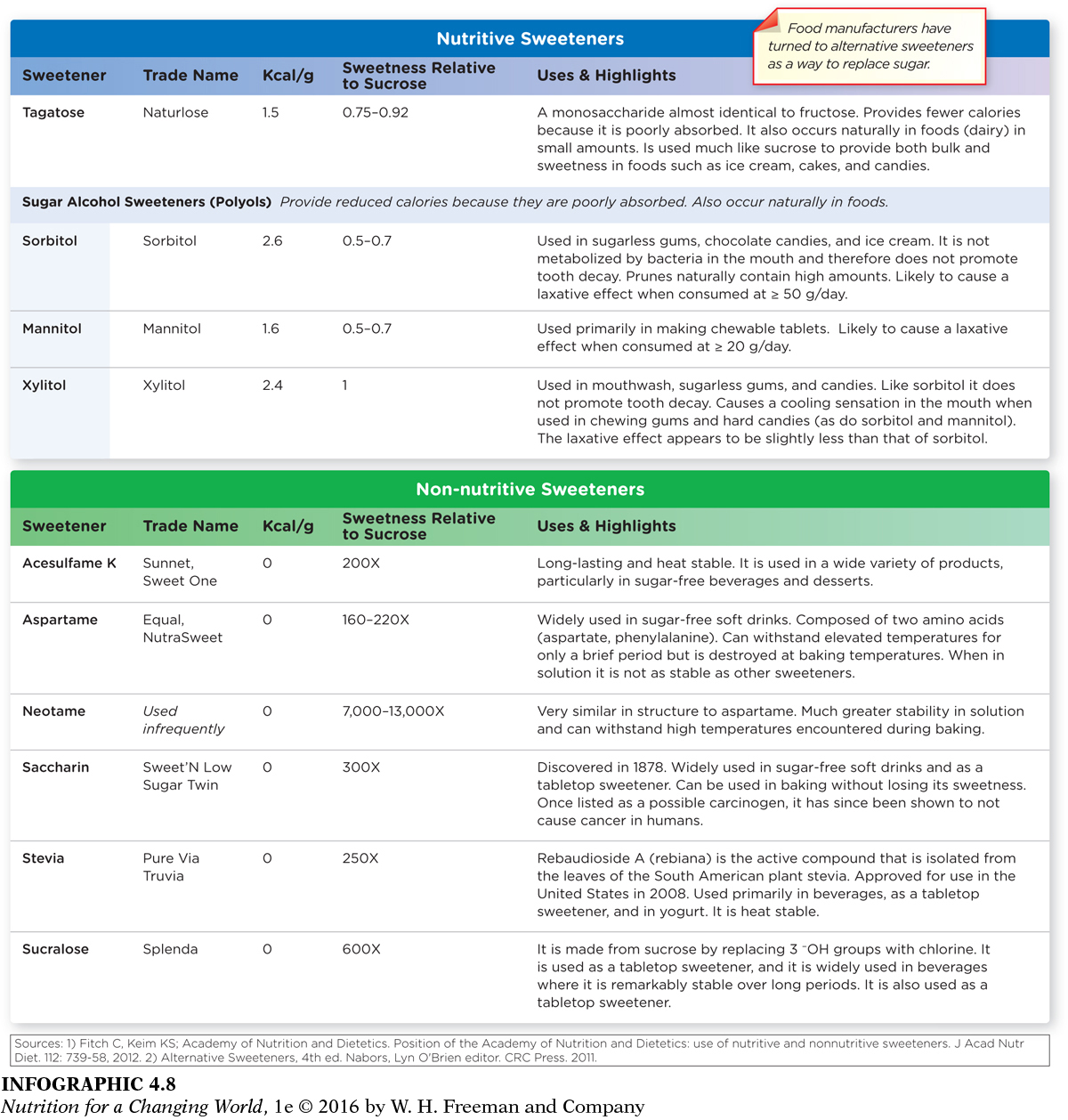Because excess sugar consumption is also associated with chronic diseases such as obesity and cardiovascular disease, the food industry has created a handful of sugar alternatives that are regulated by the United States Food and Drug Administration (FDA), which has deemed them Generally Recognized As Safe (GRAS) for use in foods. There are two main types: those that are a source of calories, the nutritive sweeteners; and those that are not, called the non-nutritive sweeteners. Nutritive sweeteners include the polyols, which are alcohol forms of sugars. Sorbitol (the alcohol form of glucose) and mannitol (the alcohol form of mannose), are made from naturally occurring sugars in plants, and because they are poorly absorbed by the body, they provide fewer than 4 kcal per gram. Because of their poor absorption, excessive consumption of sugar alcohols often causes diarrhea.
Non-nutritive sweeteners include the widely used aspartame products (Nutrasweet and Equal). Aspartame is made by linking two amino acids and, like protein, it provides 4 kcal per gram. However, it is so intensely sweet (about 200 times sweeter than sucrose) that so little is used to achieve the same level of sweetness as sucrose that it provides no significant amount of calories. Another popular non-nutritive sweetener is stevia extract (Truvia), made from the sweet leaves of subtropical stevia plants. Examples of other non-nutritive sweeteners found in foods and in the “sugar” bowl at your restaurant table include sucralose (Splenda) and saccharin (Sweet’N Low). (INFOGRAPHIC 4.8)

 You talk with someone who complains of constant upset “stomach” and diarrhea. You learn that they chew sugar-
You talk with someone who complains of constant upset “stomach” and diarrhea. You learn that they chew sugar-